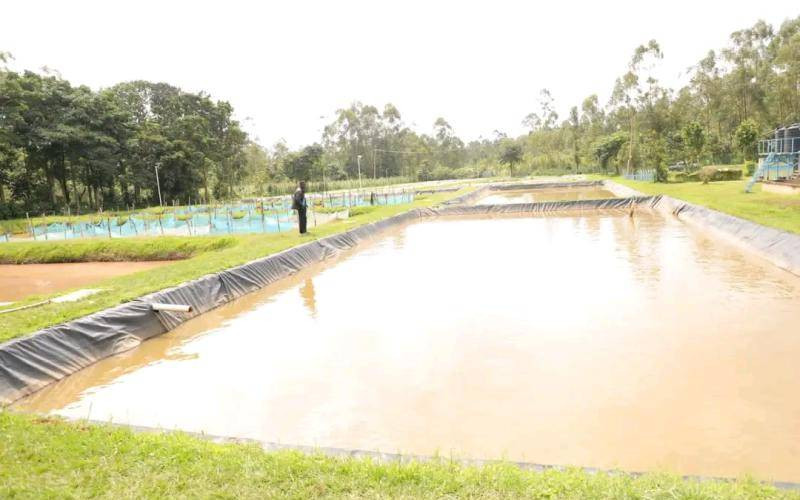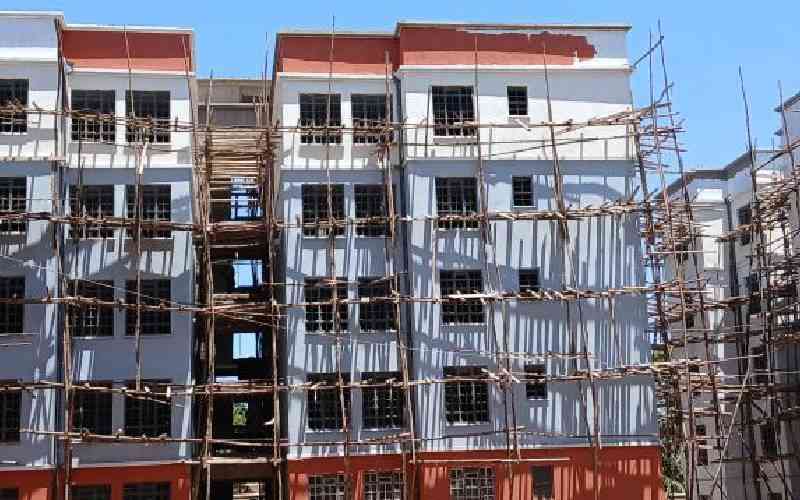Samuel Olum is on a mission to bring back once popular but endangered fish species. The fish have disappeared due to overfishing and the introduction of the cannibal Nile perch in Lake Victoria in the 1950s.
Already mud fish, commonly known as kamongo, is available at fishponds at Dunga, a stone’s throw away from the lake. Kamongo is a popular delicacy believed to have medicinal ingredients.
Says Olum: “ We also produce mumi (cat fish), and Okoko (synodontis) and fulu (haplochromis) in addition to the immensely popular ngege (tilapia) that has become terribly expensive because it has diminished from our shores and supplies have to come all the way from Uganda or Tanzania”.
They also have large numbers of okoko (synodontid), ningu (gregoris labeo) and sire (bagrus docmac) or silver catfish. Others reared in small numbers are the long snouted suma (mormmyrus kanume) or elephant snort fish, Seu (bagras docmac) or Sudan catfish and odhadho (petrocephalus). “We have sent out scouts and hope that we shall soon stock many more that have disappeared from our waters,” he adds.
Olum notes that farmers attracted by the huge demand for traditional fish are already placing orders for fingerlings. “Traditional fish are in such high demand that consumers are ready to spend their money on them. A mature kamongo for instance, fetches as much as Sh1,000. We sell in chunks to make it affordable. The delicious odhadho (petrocephalus) is also chopped into sizeable hunks for affordability. A single mature odhadho can fetch as much as Sh600,” he says.
Olum and Tich Kuoma Community Development Organisation that he heads are already earning in excess of Sh100,000 per month that his team is now eyeing the lucrative tourism sector. “We have a combined tilapia and catfish breeding population of 3,300 in our ponds for the production of fingerlings that we distribute to interested farmers at a subsidised cost,” says Olum.
Tich Kuoma project sits on age old natural springs that flow with mineral water from the bowels of the earth close to the lake shore the whole year round. “Our water is free of any pollution and suitable for fish farming and breeding, hence our confidence to resuscitate dying species here,” says Olum.
He says future plans for his outfit include the bottling of mineral water to generate more funds for the expansion of the project that started as economic stimulus initiative with a few ponds in 2011.
“We initially had tree nurseries and engaged idle youth in tree planting around our ponds, an ingenuity that won us the presidential green award in 2012.
Evidence of that activity is the hundreds of grevillea Robusta trees you can see around here. Their leaves that keep dropping into the ponds help generate natural food for fish.
“With the parent stock in place, the next phase is having them multiply in clear waters where the public and more so young people from schools and colleges can view them.
“Finally, we shall re-introduce them into the lake by way of cage faming when their populations grow big enough and find ways of protecting them from the Nile Perch and rogue fisher men who use unrecommended harvesting methods.
He describes the breeding of traditional fish as a worthy project that has since received a boost from Kisumu County Women’s Representative Rose Nyamunga who incorporated it into her county food security projects in January 2015.
A hatchery established through her effort is already a source of tilapia and catfish fingerlings for farmers. Says Olum: “She has brought us experts to advise us on the best techniques to raise fingerlings and by providing fish meal to ensure mono sex male populations suitable for commercial farming.
Nyamunga singles out fish meal as the greatest obstacle in fish farming within Kisumu and surrounding counties. She says plans are underway to up light milling industries for affordable fish, chicken and dairy meal to win more people into fish and general livestock farming.
Stay informed. Subscribe to our newsletter
“We are rehabilitating ponds dug up during the economic stimulus progamme and neglected for various reasons. The rehabilitation effort has revived about 2,000 ponds that will benefit in excess of 5,000 people throughout the county,” she effuses.
 The Standard Group Plc is a
multi-media organization with investments in media platforms spanning newspaper
print operations, television, radio broadcasting, digital and online services. The
Standard Group is recognized as a leading multi-media house in Kenya with a key
influence in matters of national and international interest.
The Standard Group Plc is a
multi-media organization with investments in media platforms spanning newspaper
print operations, television, radio broadcasting, digital and online services. The
Standard Group is recognized as a leading multi-media house in Kenya with a key
influence in matters of national and international interest.
 The Standard Group Plc is a
multi-media organization with investments in media platforms spanning newspaper
print operations, television, radio broadcasting, digital and online services. The
Standard Group is recognized as a leading multi-media house in Kenya with a key
influence in matters of national and international interest.
The Standard Group Plc is a
multi-media organization with investments in media platforms spanning newspaper
print operations, television, radio broadcasting, digital and online services. The
Standard Group is recognized as a leading multi-media house in Kenya with a key
influence in matters of national and international interest.





